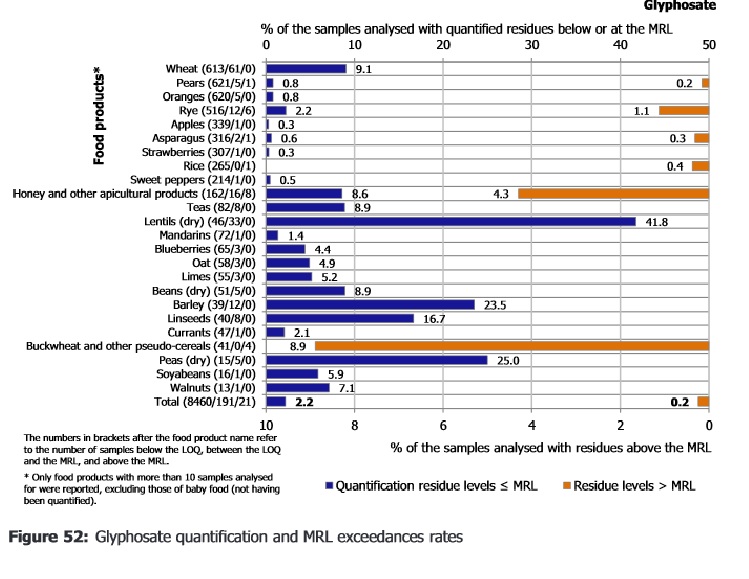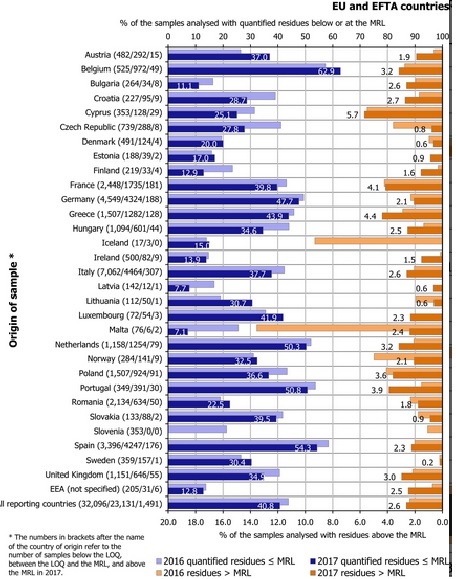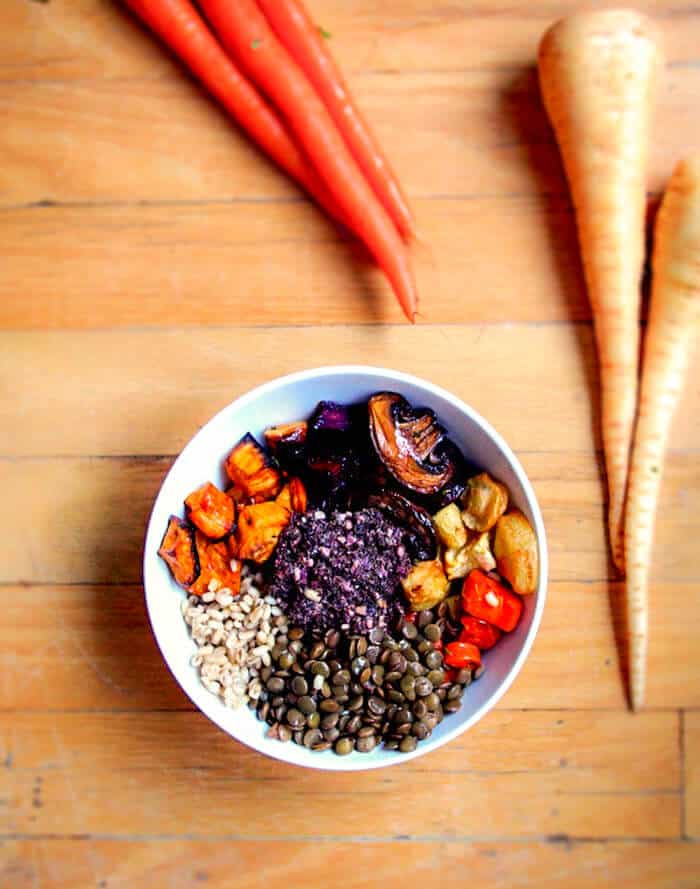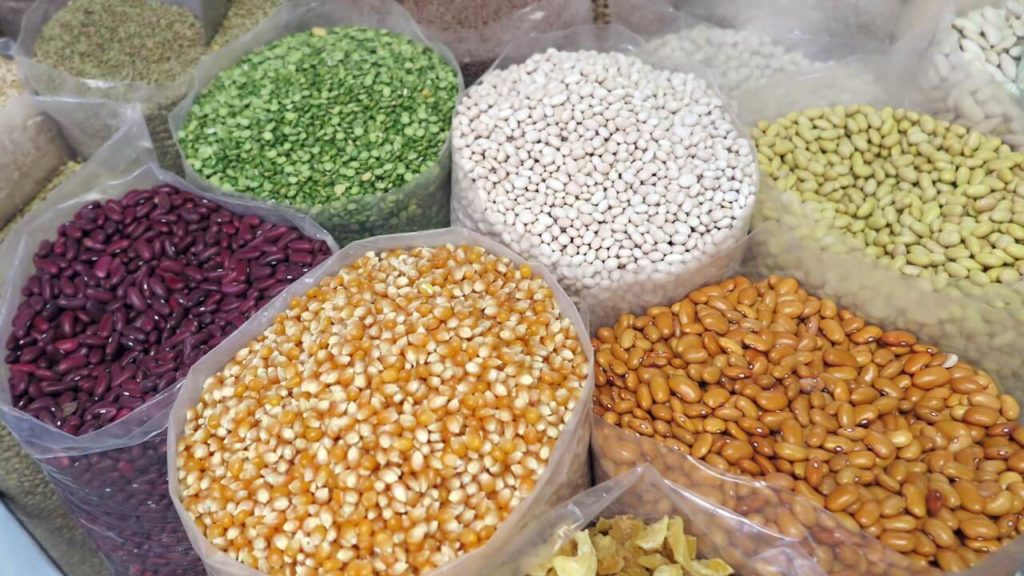The European Food Safety Authority EFSA has just published its 2017 annual report on pesticide residues in food in EU Member States, Iceland and Norway.
Whereas the report concludes that, for the samples analysed, the health risk is “low”, it recommends that national authorities improve methods of evaluating the presence of multiple residues for over a quarter of the samples analysed.
The report is a long, highly detailed and informative read with charts and statistics, worth perusing. The devil is in the details, but the overall conclusion is:
95.9% of the 88,247 food samples fell within the legal limits.
– In 54.1%, residue levels were below the limit of quantification (LOQ), i.e. safe to consume, with pesticide readings so low they don’t need further quantification.
– 41.8% contained quantified residues at or below the maximum residue levels (MRLs), i.e. safe to consume.
![]()
![]()
However, there has been a steady rise in pesticides levels since 2015:
In 2015, 2.8% of samples were above the authorised level.
In 2016, 3.8% of samples were above the authorised level
In 2017, 4.1% of samples were above the authorised level.
What pesticides in which food?
Surprisingly, EU-non approved pesticides were found in samples grown in the EU. In some cases they exceeded the legal limits imposed on food from outside the EU. They were found in carrots (dieldrin, parathion-methyl, procymidone); onions (dicloran); oranges (fenthion, methidathion and profenofos); pears (permethrin); potatoes (clothianidin); dried beans (carbendazim); rice (carbendazim, permethrin and dichlorvos), and rye (permethrin).
Samples originating from non-EU countries registered pesticides levels above legally accepted limits: kiwis (methidathion); oranges (chlorfenapyr, methidathion and profenofos); dried beans (carbaryl and diazinon); rice (acephate, carbendazim, hexaconazole, methamidophos, and triazophos).
Baby foods getting safer.
94.6% of samples of baby food products showed residues below the LOQ.
5.4% of samples contained quantifiable residues at or above the LOQ.
This is an improvement on figures for 2016 when 89.8% of samples contained residues below the LOQ, and 10.2% contained quantifiable residues at or above the LOQ.
1.5% of the 2017 samples, all the same, exceeded the MRL of 0.01 mg/kg applicable for baby food. (1.9% in 2016).
Glyphosate
Contrary to public perception, glyphosate levels were not high in most products. Glyphosate was analysed by 25 reporting countries.
Residues of glyphosate and persistent environmental contaminants were below the limit of quantification in baby food samples analysed (the same result for 2016).
- In 97.5% of products, glyphosate was below LOQ.
- 2% of products contained glyphosate above LOQ but below MRL rates.
- 2% exceeded MRL.
Glyphosate exceeded MRL in samples from Germany (7 samples of honey), Italy (1 sample of asparagus and 1 sample of rye), Poland (1 sample of buckwheat and 1 sample of pears), Austria (1 sample of honey), France (1 sample of rice) and 8 of unknown origin (5 samples of rye and 3samples of buckwheat).
The highest MRL exceedance rate for glyphosate was for dried lentils, followed by dried peas, then barley. See figure below.

France, Cyprus, Greece have the highest exceedance rates.
Among the reporting countries the highest MRL exceedance rates were found in food products from Cyprus, Greece and France: over 4% of samples were above MRL limits.
Malta however shows a decrease of non-compliant samples from 13.5% in 2016 to 2.4% in 2017. See below.

An eye should also be kept on imported products from outside EU.
Although several non-authorised pesticides were found in both EU and non-EU food products, 7.6% of samples taken from non-EU products were above authorised limits, as opposed to 2.6% in EU products.
The highest MRL exceedance rates (more than 10% of the samples) were reported for Malaysia, Pakistan, Sri Lanka, Vietnam, Madagascar, the Dominican Republic, Suriname, India, China, Thailand, Ethiopia, Jordan, Colombia and Kenya.
There will always be sceptics ready to criticise and discredit scientific studies, to point fingers at politicians and the agro food industry suspected of influencing results. But if we don’t believe the scientific measures we use, then who are we to believe? In scientific studies we must assume that there is a measure on which we will all agree, or we can have no truth at all. Otherwise what are we going to base our decisions on? Lobbies and political influencers? One can contest scientific measurements – which this Report has done, calling for more precise measurements of certain molecules from reporting countries – but if we don’t work on something until there’s a perfect measure, then we’re never going to advance in anything.

____________________________________
EFSA (European Food Safety Authority), 2019. Scientific report on the 2017European Union report on pesticide residues in food. EFSA Journal 2019; 17(6):5743, 152 pp. Consult the report here.


















